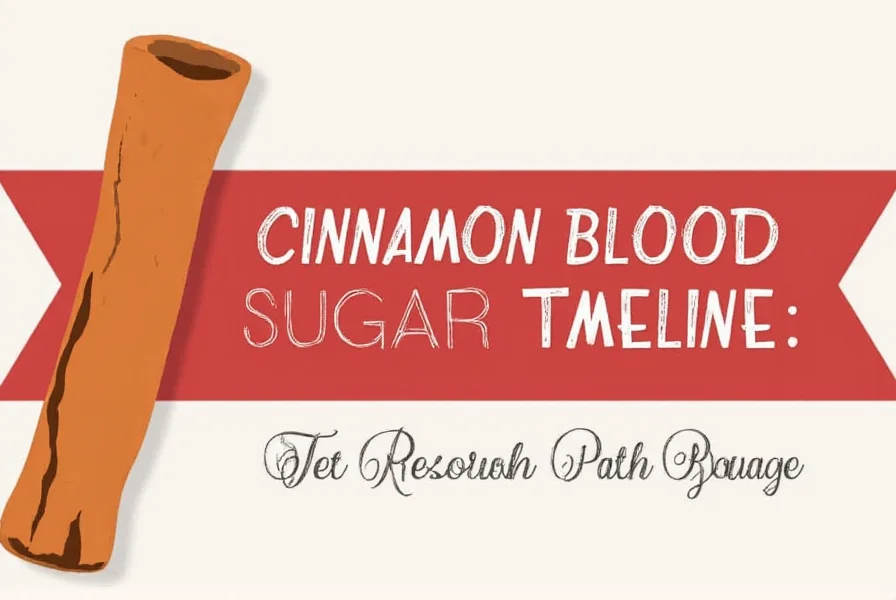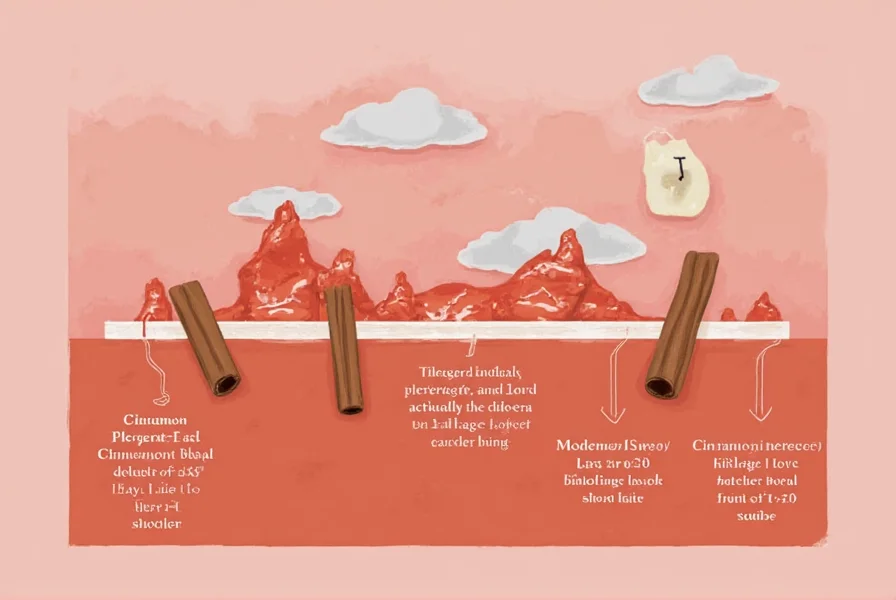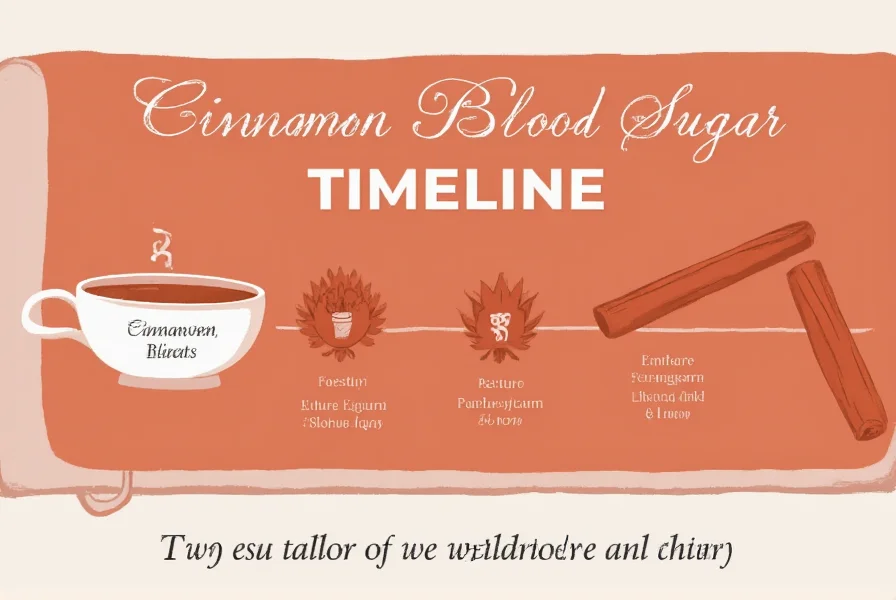Many people exploring natural approaches to blood sugar management wonder about cinnamon's potential benefits. While scientific evidence suggests cinnamon may have some positive effects on blood glucose levels, understanding the realistic timeframe and limitations is crucial for making informed decisions about your health.
The Science Behind Cinnamon and Blood Sugar Regulation
Multiple studies have investigated cinnamon's potential effects on blood sugar. The active compounds in cinnamon, particularly cinnamaldehyde and polyphenols, appear to improve insulin sensitivity and may help slow the breakdown of carbohydrates in the digestive tract. This dual mechanism could explain why some research shows cinnamon might help moderate blood glucose spikes after meals.
A comprehensive review published in the Journal of the Academy of Nutrition and Dietetics analyzed multiple clinical trials and found that cinnamon supplementation generally demonstrated modest improvements in fasting blood glucose levels. However, the researchers emphasized that results varied significantly across studies, with some showing minimal effects.
Understanding the Timeframe for Blood Sugar Effects
When examining how long does it take cinnamon to lower blood sugar, research reveals two distinct timeframes:
| Type of Effect | Timeframe | Research Evidence |
|---|---|---|
| Acute effects (single dose) | 2-4 hours after consumption | Limited studies show modest reduction in post-meal blood sugar spikes |
| Chronic effects (regular use) | 4-12 weeks of daily consumption | Multiple studies show modest improvements in fasting blood glucose and HbA1c |
The acute effects of cinnamon appear relatively short-lived, potentially helping moderate blood sugar spikes after meals. However, for more sustained improvements in overall blood sugar control, consistent daily use over several weeks appears necessary based on current research.
Factors Influencing Cinnamon's Effectiveness
Several variables affect how quickly cinnamon lowers blood sugar and the magnitude of its effects:
- Cinnamon type: Ceylon cinnamon (true cinnamon) versus Cassia cinnamon have different compound profiles
- Dosage: Studies typically use 1-6 grams daily, with most showing benefits at 1-3 grams
- Individual metabolism: Genetic factors and existing health conditions significantly impact response
- Diet and lifestyle: Effects may be enhanced when combined with other healthy habits
- Baseline blood sugar levels: Those with higher initial levels may see more noticeable changes
Ceylon vs. Cassia Cinnamon: Important Differences
Not all cinnamon is created equal when considering how long it takes cinnamon to affect blood sugar. The two main varieties have important distinctions:
- Cassia cinnamon: More common and less expensive, but contains higher levels of coumarin, which can be harmful to the liver in large amounts
- Ceylon cinnamon: Often called "true cinnamon," contains significantly less coumarin but may be less potent for blood sugar effects
Most clinical studies demonstrating blood sugar benefits used Cassia cinnamon, but health professionals often recommend Ceylon for long-term use due to safety concerns with coumarin.

Realistic Expectations for Blood Sugar Management
Research examining how long does cinnamon take to lower blood sugar consistently shows modest effects at best. A meta-analysis in the Annals of Family Medicine found that cinnamon supplementation reduced fasting blood glucose by approximately 24.59 mg/dL on average compared to control groups.
These improvements, while potentially meaningful, are substantially less than what prescription diabetes medications typically achieve. Cinnamon should be viewed as a potential complementary approach rather than a primary treatment for blood sugar management.
Safety Considerations and Medical Guidance
Before incorporating cinnamon for blood sugar concerns, consider these important factors:
- Cinnamon supplements may interact with certain medications, including blood thinners and diabetes drugs
- Excessive Cassia cinnamon consumption can lead to coumarin toxicity
- People with liver conditions should exercise particular caution
- Cinnamon should never replace prescribed diabetes medications without medical supervision
Consult your healthcare provider before using cinnamon specifically for blood sugar management, especially if you have diabetes or take medications that affect blood glucose.
Integrating Cinnamon into a Comprehensive Blood Sugar Strategy
For those interested in how long it takes for cinnamon to lower blood sugar as part of a broader approach, consider these evidence-based strategies:
- Combine cinnamon with other blood sugar-supportive foods like fiber-rich vegetables and quality protein
- Maintain consistent meal timing to support stable blood glucose levels
- Engage in regular physical activity, which has immediate and long-term blood sugar benefits
- Monitor blood sugar levels to track individual responses to dietary changes
- Work with a healthcare provider to develop a comprehensive management plan

Conclusion: Setting Realistic Timelines for Cinnamon's Effects
When researching how long does it take cinnamon to lower blood sugar, the evidence suggests modest potential benefits with consistent use over weeks rather than immediate dramatic effects. While some acute effects may occur within hours after consumption, significant improvements in blood sugar markers typically require 4-12 weeks of daily supplementation.
Individual responses vary considerably, and cinnamon should be viewed as one component of a comprehensive blood sugar management strategy rather than a standalone solution. Always consult with healthcare professionals before making changes to your diabetes management plan, and never discontinue prescribed medications in favor of cinnamon or other supplements.











 浙公网安备
33010002000092号
浙公网安备
33010002000092号 浙B2-20120091-4
浙B2-20120091-4